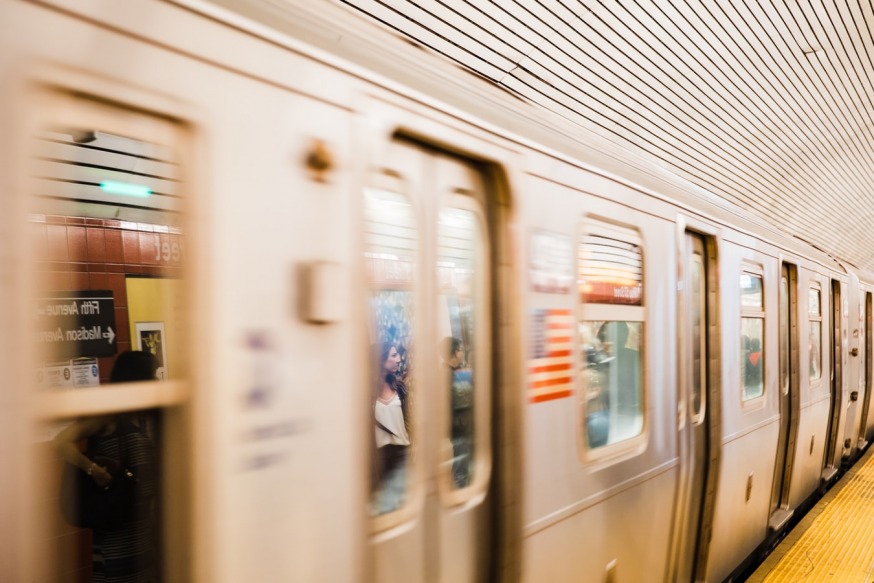
NYC Subway (Unsplash)
Aug. 29, 2020 By Allie Griffin
The MTA warned of huge service reductions, fare hikes and mass layoffs if the federal government doesn’t step in and provide aid to the cash-strapped agency.
The MTA needs $12 billion in federal funding immediately to avoid “draconian” and “unthinkable” measures to alleviate its massive deficit caused by the COVID-19 pandemic, transit officials said at an emergency MTA board meeting Wednesday.
“Without this additional federal funding, we could be forced to take draconian measures, the impact of which will be felt across the system, the region for decades to come,” MTA Chairman Patrick Foye said.
The MTA may be forced to cut subway, bus and Staten Island Railway service by 40 percent. The cuts would increase wait times on subways by eight minutes and buses by 15 minutes
The Long Island Railroad and Metro North could face even higher service reductions of up to 50 percent.
Transit officials also warned of additional fare and toll hikes on top of biennial increases already planned.
They also said more than 7,200 MTA jobs could be cut and a wage freeze implemented through 2022 if the federal aid doesn’t come through.
Capital projects and renovations, such as phase two of the Second Avenue subway extension and ADA system upgrades, could also face setbacks and delays without the $12 billion in aid.
The MTA saw a 40 percent reduction in revenue during the pandemic, as ridership plummeted.
During the worst of the pandemic, subway ridership dropped 95 percent and is still down 75 percent today, officials said.
“The MTA has never seen ridership declines as severe and sustained as now; never seen revenue losses of this magnitude,” Foye said.
“We’re losing about $200 million a week in revenue losses from fares, tolls, subsidies and pandemic related expenses,” he added.
Foye said the current COVID-19 economic crisis is by far the worst the MTA has ever faced and far exceeds the impact of the Great Depression on New York City mass transit.
“The survival of the MTA and the existence of millions of jobs in this region and across the country lie squarely in the hands of the federal government,” Foye said.
He said the MTA has no other means to close the deficit and that the aid money allocated to the MTA through the CARES Act ran out on July 24.
“There’s no ignoring the gaping hole in the budget that still remains,” he said. “I can’t be any clearer, the federal government must deliver for the MTA. It is literally our only option for survival.”
One Comment

Financial viability of the MTA is a four way dance between farebox revenue, City Hall, Albany and Washington. There are $12 billion worth of Federal Transit Administration funding projects and programs in active open grants. The MTA has never initiated and completed a forensic audit to determine unspent available balances. The FTA issued guidance on March 13 that gave all transit agencies including the MTA permission for reallocation of federal funding from capital projects in existing grants to reprogram these funds toward COVID-19 capital and operating expenses.
The FTA made available $1.4 billion worth of annual formula funding in 2020. The MTA can program these funds toward COVID-19 capital and operating expenses. MTA has already received $3.9 billion in CARE COVID-19 funding. .
On October 1st, an additional $1.5 billion in 2021 funds will become available. (This assumes Congress completes passage of a transportation funding bill on time for a change and sends it to the President that he can sign it). The MTA can program these funds toward covering capital improvements and operating deficits as a result of COVID-19. Riders and Washington have already done their part. City Hall and Albany must do likewise.
(Larry Penner — transportation advocate, historian and writer who previously worked for the Federal Transit Administration Region 2 New York Office. This included the development, review, approval and oversight for billions in capital projects and programs for the MTA, NYC Transit, Long Island Rail Road, Metro North Rail Road, MTA Bus along with 30 other transit agencies in NY & NJ) .
.